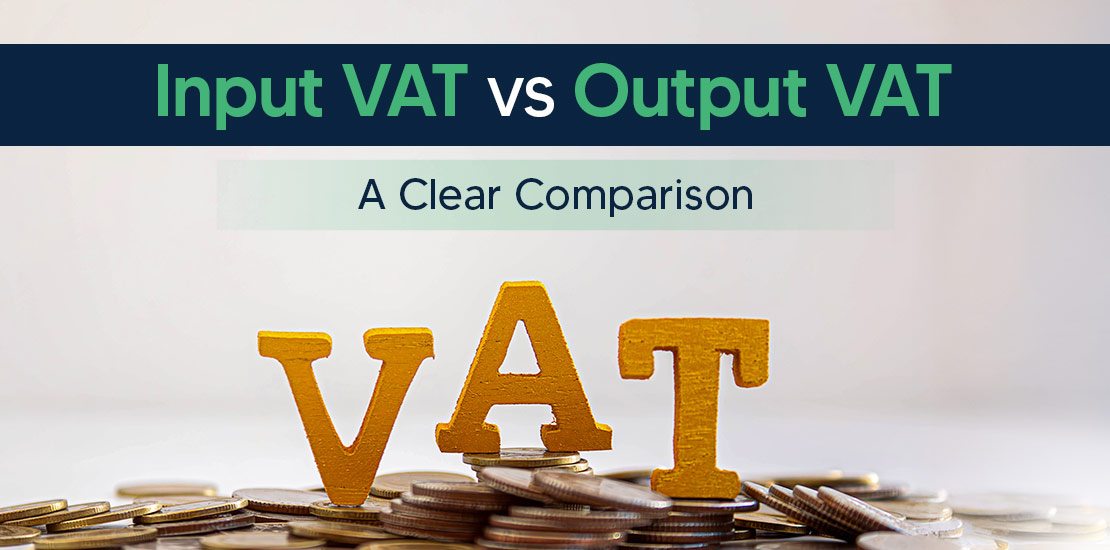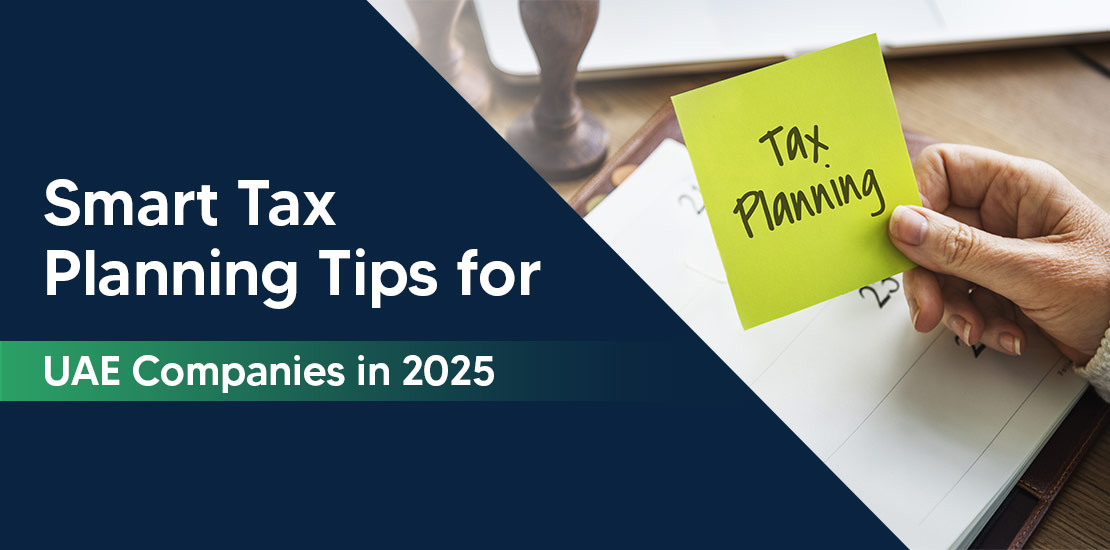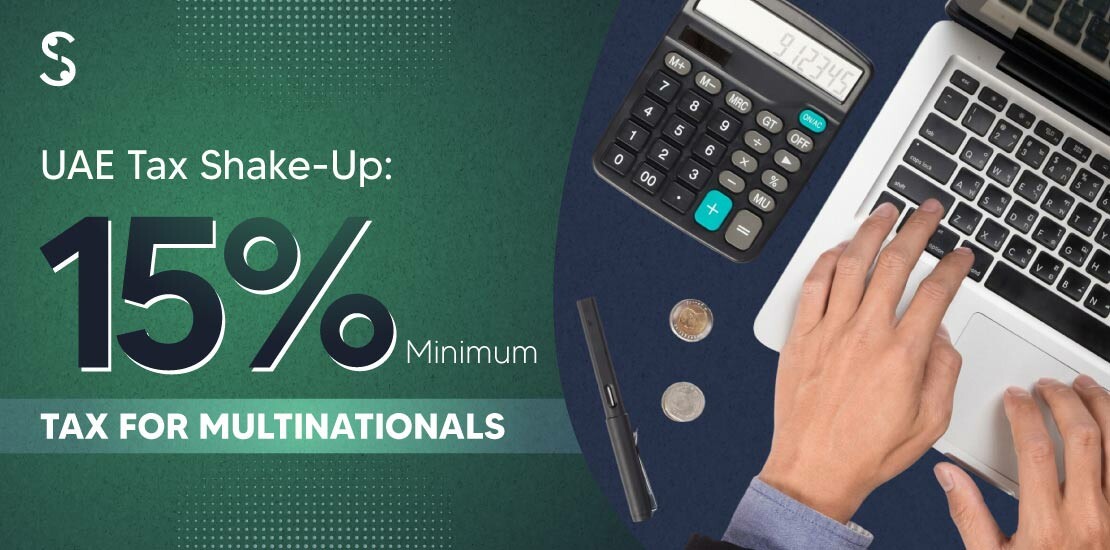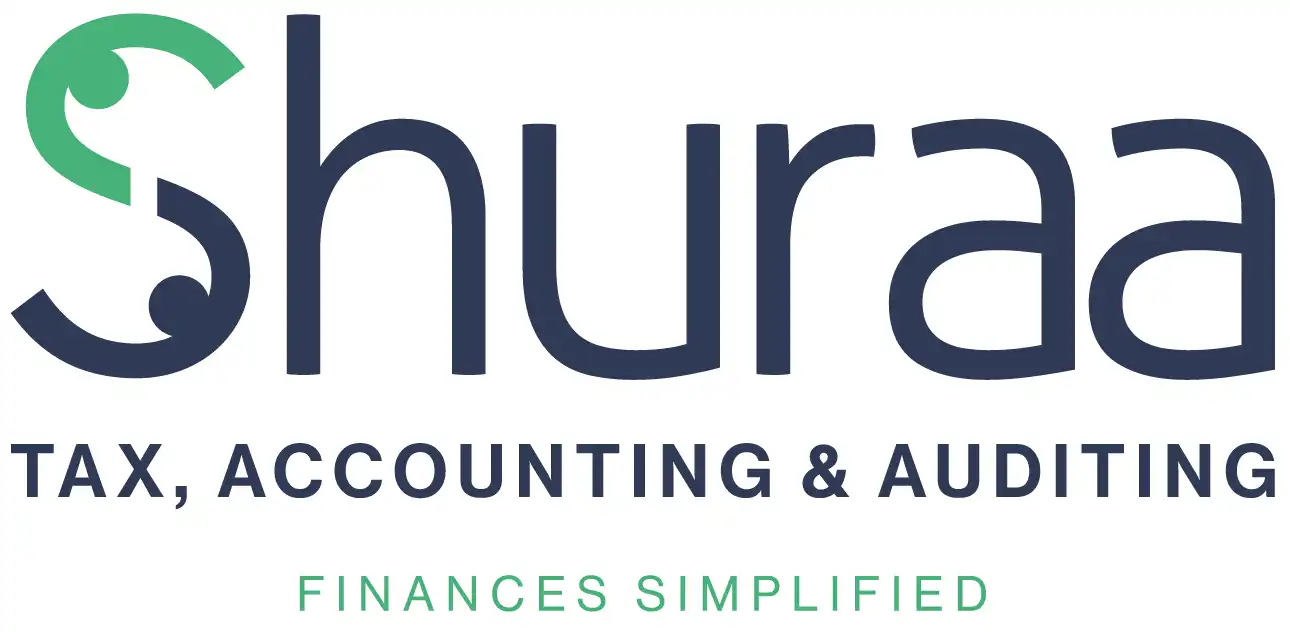Table of Contents
The UAE introduced Value Added Tax (VAT) on January 1, 2018, at a standard rate of 5% on most goods and services. Two terms you’ll hear a lot are Input VAT and Output VAT, and knowing how they work can make a big difference to your finances.
Simply put, Output VAT is the tax you collect from your customers when you sell goods or services, while Input VAT is the tax you pay to your suppliers when buying goods or services for your business. The difference between the two determines whether you owe money to the Federal Tax Authority (FTA) or can claim a refund.
Knowing the difference between Input and Output VAT in UAE can save your business money and help keep your cash flow healthy.
UAE VAT Overview
Value Added Tax (VAT) is a type of tax that is applied to most goods and services at each stage of production and supply. In the UAE, the standard VAT rate is 5%.
Unlike a sales tax that’s only charged at the final sale, VAT is collected at every stage of the supply chain, from manufacturing to wholesale to retail. Each business in the chain charges VAT on its sales (Output VAT) and can recover the VAT it paid on purchases (Input VAT).
What is Output VAT?
Output VAT is the Value Added Tax that a VAT-registered business charges and collects from its customers when it supplies taxable goods or services. In simple terms, it’s the tax portion of your sales. Since the VAT is ultimately borne by the consumer, your business acts as a tax collector on behalf of the UAE Federal Tax Authority (FTA).
Who is Responsible for Charging Output VAT?
Any business registered for VAT in the UAE is responsible for charging Output VAT on taxable sales. This applies to both goods and services. Businesses must issue proper tax invoices showing the Output VAT amount separately to ensure transparency and compliance.
How Output VAT is Calculated
Output VAT = Sale Price × VAT Rate
Example:
- Sale price of a product: AED 1,000
- VAT rate: 5%
- Output VAT: AED 1,000 × 5% = AED 50
- Total amount charged to the customer: AED 1,050
The AED 50 collected is Output VAT, which your business must later report and pay to the FTA.
Impact of Output VAT on Business Cash Flow
- Temporary Holding: While businesses collect Output VAT from customers, this money does not belong to them. It is essentially held on behalf of the government.
- VAT Returns: The total Output VAT collected over a period is reported in VAT returns. If your Output VAT exceeds your Input VAT (VAT paid on purchases), you pay the difference to the FTA.
- Cash Flow Planning: Proper tracking ensures you don’t accidentally spend the Output VAT, which could cause cash flow problems when it’s time to remit it.
What is Input VAT?
Input VAT is the VAT that a business pays on goods or services it purchases for business purposes. Unlike Output VAT, which is collected from customers, Input VAT is something your business pays to suppliers.
Input VAT applies to business purchases such as:
- Raw materials and Inventory for resale.
- Utilities (electricity, water, internet).
- Office supplies and Equipment (laptops, furniture).
- Professional services (accounting, legal fees, consultancy).
- Imported goods (where Reverse Charge applies).
How Input VAT Can Be Recovered
Registered businesses in the UAE can reclaim Input VAT from the Federal Tax Authority (FTA) when filing their VAT returns. The amount of Input VAT can be offset against the Output VAT collected from customers.
Formula: VAT Payable / Refundable} = Output VAT Collected – Input VAT Paid (Recoverable)
If Output VAT > Input VAT: Your business pays the positive difference to the FTA.
If Input VAT > Output VAT: Your business is in a net refundable position and can either claim the excess amount back from the FTA or carry it forward as a credit against future VAT liabilities.
Example:
Your business buys office furniture for AED 2,000 + 5% VAT (AED 100).
This AED 100 is Input VAT.
When filing your VAT return, you can subtract this AED 100 from the Output VAT collected on sales.
Conditions for Claiming Input VAT in the UAE
To successfully reclaim Input VAT, the following conditions must be met:
- Valid Tax Invoice: You must have a proper VAT invoice from the supplier.
- Business Use: The purchase must be used for business purposes. Personal expenses cannot be claimed.
- VAT Registration: Only VAT-registered businesses can reclaim Input VAT.
- Eligible Goods/Services: VAT paid on exempt or non-business activities cannot be claimed.
Impact of Input VAT on Business Finances
- Reduces Net VAT Payable: Input VAT offsets the Output VAT, reducing the total amount payable to the FTA.
- Cash Flow Benefits: Claiming Input VAT ensures your business is not overpaying taxes and helps maintain healthy cash flow.
- Record Keeping: Maintaining accurate invoices and purchase records is crucial to claim Input VAT without issues.
Key Differences Between Input VAT and Output VAT
Here’s a quick comparison to help you understand how Input VAT and Output VAT differ in the UAE.
| Feature | Input VAT | Output VAT |
|---|---|---|
| Definition | VAT paid on business purchases or expenses. | VAT collected on sales of goods or services. |
| Who Pays It? | Business pays it to suppliers. | Customers pay it to the business. |
| Who Can Claim/Collect | VAT-registered businesses can reclaim it from the FTA. | VAT-registered businesses must collect it and remit to the FTA. |
| Impact on VAT Returns | Reduces the total VAT payable; can result in a refund if Input VAT > Output VAT. | Increases the total VAT payable; the difference with Input VAT determines net liability. |
| Examples | Raw materials, office rent, utilities, professional services, equipment. | Product sales, service fees, consultancy charges, retail invoices. |
| Purpose | Ensures businesses don’t overpay VAT on purchases. | Ensures VAT is collected on taxable sales for the government. |
| Documentation Required | Valid tax invoice showing VAT paid; purchase must be for business use. | Tax invoice issued to customer showing VAT charged. |
| Effect on Cash Flow | Helps reduce VAT burden and improves cash flow. | Temporary cash held for the government; must be remitted to FTA. |
VAT Return Process in the UAE
VAT-registered businesses in the UAE must file periodic VAT returns, usually quarterly or monthly depending on their revenue and the FTA’s requirements. During this process, businesses:
- Report Output VAT: The total VAT collected from customers on all taxable sales and services during the period.
- Report Input VAT: The total VAT paid on all business-related purchases and expenses, including goods, utilities, office rent, and services.
- Calculate Net VAT: Subtract Input VAT from Output VAT to determine the net VAT payable to the FTA or refundable from the FTA.
Proper documentation, like valid tax invoices and receipts, is crucial to support both Input and Output VAT claims. Failure to maintain accurate records can result in fines or rejection of VAT claims.
Other Essential Considerations for UAE Businesses
Besides basic VAT calculations, there are a few important points businesses should keep in mind to manage VAT effectively.
- Cross-Border Transactions: Importing goods may involve Input VAT on customs, which can also be claimed if properly documented. Export sales may be zero-rated, affecting Output VAT calculations.
- Partial Exemptions: Businesses engaged in both taxable and exempt activities may only claim Input VAT proportionate to taxable supplies.
- Regular Monitoring: Keeping track of VAT collected and paid throughout the period helps avoid errors and ensures timely filing of VAT returns.
Simplify Your VAT Process with Shuraa Tax
Knowing the difference between Input VAT and Output VAT is important for every business in the UAE. Output VAT is the tax you collect from customers, while Input VAT is the tax you pay on business purchases. Keeping track of both helps you stay compliant, avoid fines, and manage your cash flow better.
If you want to make VAT easy and stress-free, experts like Shuraa Tax can help with registration, filings, and ongoing guidance. Get in touch today.
📞 Call: +(971) 44081900
💬 WhatsApp: +(971) 508912062
📧 Email: info@shuraatax.com
Commonly Asked Questions
1. What is Input VAT and Output VAT?
Input VAT is the tax your business pays on purchases and expenses, while Output VAT is the tax you collect from customers on sales. The difference determines your net VAT payable or refundable.
2. Is Input VAT an expense?
No, Input VAT is not a business expense if you are VAT-registered. You can reclaim it from the FTA, reducing your net VAT payable.
3. How can I minimise my VAT liability in the UAE?
Keep accurate records of Input and Output VAT, claim all eligible Input VAT, ensure proper tax invoices, and file VAT returns on time. Consulting experts can also help optimise VAT legally.
4. Can I reclaim VAT on all purchases?
No, only VAT paid on business-related purchases with valid invoices can be reclaimed. VAT on personal or non-business expenses cannot be claimed.
5. What happens if I collect more Output VAT than I paid in Input VAT?
If Output VAT exceeds Input VAT, you pay the difference to the FTA. If Input VAT is higher, you can claim a refund from the FTA.












